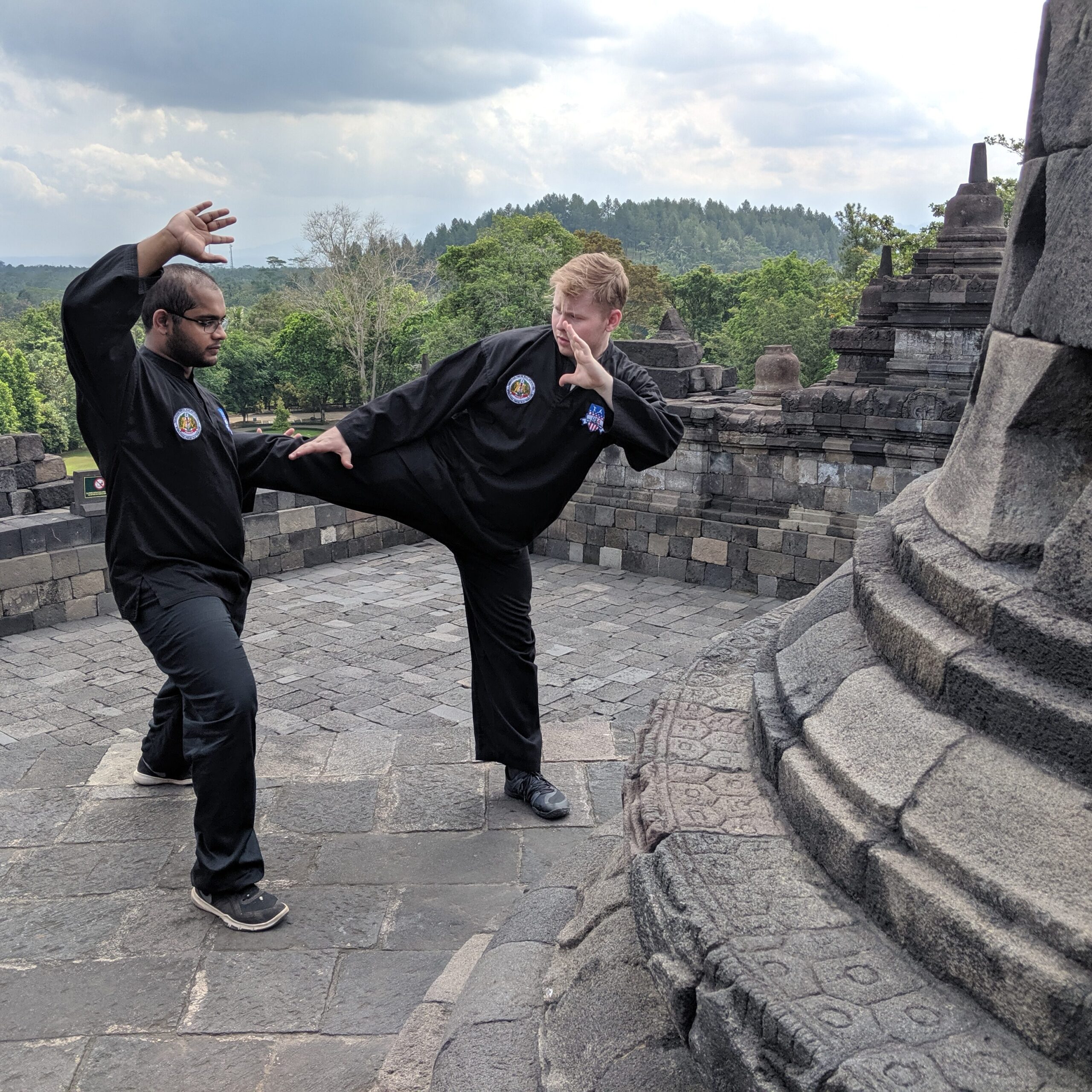
Silat (pronounced see-laht, IPA [silat]) is a blanket term to refer to the variety of martial arts indigenous to the Malay Archipelago and the Malay Peninsula, which includes countries such as Indonesia, Malaysia, Singapore and Brunei. The term pencak silat (rough pronunciation pen-chalk see-laht, IPA [ˈpɛntʃaʔ ˈsilat]) was chosen in 1948 as a unifying term that compounded pencak, a word commonly used in central and east Java, with silat, a word employed more frequently in Sumatra and Malaysia.
Because silat adapted over hundreds of years to the environs and conditions of those practicing the art, there is no single, canonical silat style. However, the shared history and culture of the region have led to a number of common traits including heavy emphasis on bladed weapon use and defense, strikes, joint manipulation, and evasion. In practice, these characteristics can come together as a fluid, yet surprisingly devastating form of fighting.
Traditionally, instruction of silat included much more than fighting. Students are expected to have knowledge of healing and meditation. A complete silat practitioner understands how to destroy, but endeavors to create.